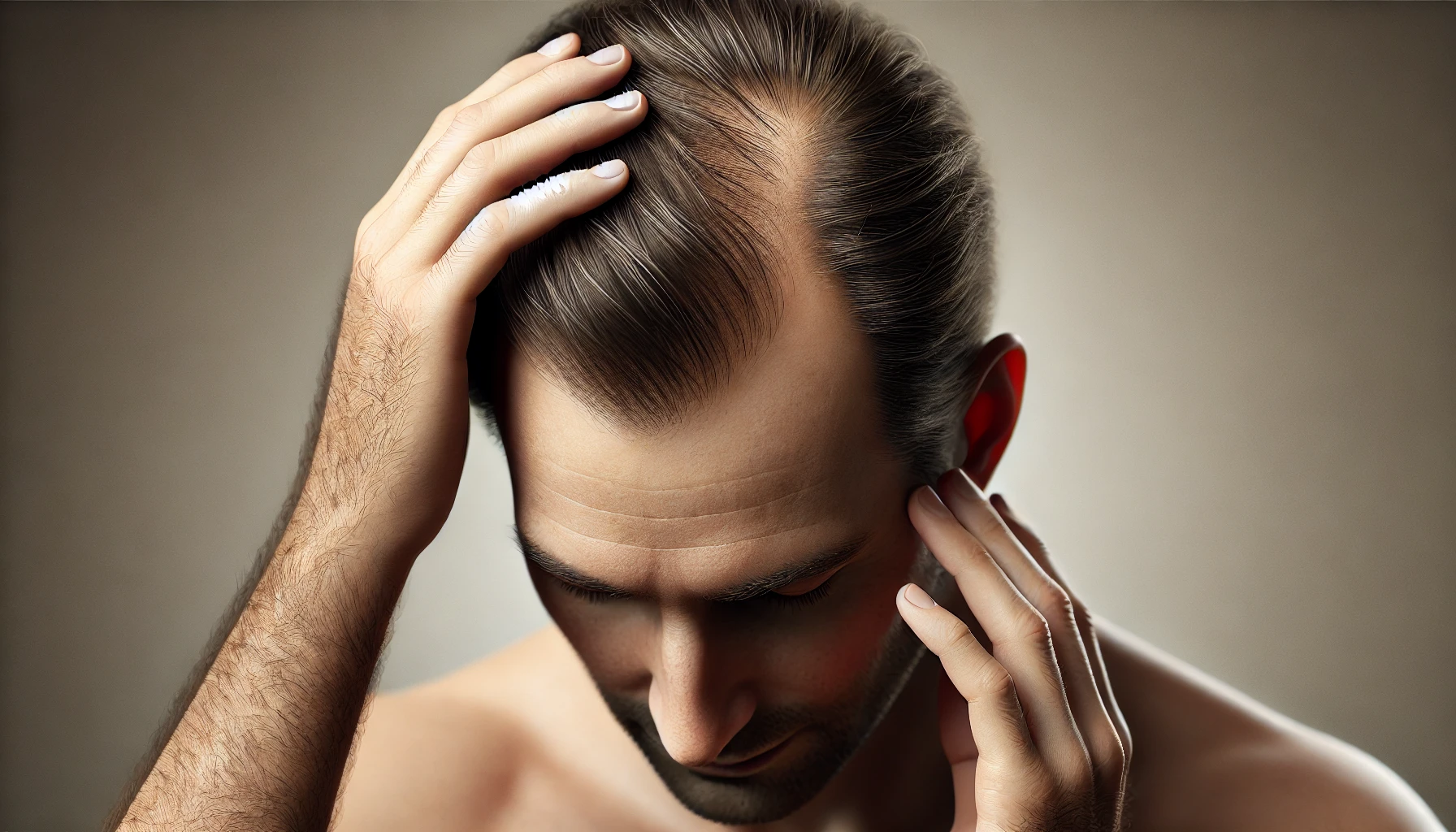This post was written with Consensus AI Academic Search Engine – please read our Disclaimer at the end of this article. Male pattern baldness is a common condition characterized by a receding hairline, thinning at the crown, and overall hair thinning. The primary cause is androgenetic alopecia, a hereditary condition influenced by the hormone DHT. Understanding these symptoms and causes is crucial for effective treatment and management of hair loss in men.
Symptoms of Men’s Hair Loss
Men’s hair loss, commonly referred to as male pattern baldness or androgenetic alopecia (AGA), is characterized by a distinct pattern of hair thinning and loss. The primary symptoms include:
- Receding Hairline: One of the earliest signs of male pattern baldness is a receding hairline, often forming an “M” shape as the hair thins at the temples.
- Thinning at the Crown: Another common symptom is thinning at the crown of the head, which can eventually lead to a bald spot.
- Overall Thinning: Some men experience a more diffuse thinning across the entire scalp, rather than in specific areas.
These symptoms are progressive and can lead to significant hair loss over time if not treated1 2.
Causes of Men’s Hair Loss
The primary cause of male pattern baldness is androgenetic alopecia, a hereditary condition influenced by androgens, particularly dihydrotestosterone (DHT). The key factors include:
- Genetics: AGA is a hereditary disorder, meaning it is passed down from one’s parents. It follows a specific pattern causing progressive thinning of hair in both men and women2.
- Dihydrotestosterone (DHT): DHT, a derivative of testosterone, plays a crucial role in hair loss. It binds to receptors in hair follicles, leading to their miniaturization and eventual loss. Elevated levels of DHT in the scalp are a significant contributing factor to male pattern baldness1 3.
- Hormonal Changes: Changes in hormone levels, particularly an increase in DHT, can trigger and accelerate hair loss. Treatments that inhibit the conversion of testosterone to DHT, such as finasteride and dutasteride, have been shown to be effective in slowing hair loss and promoting hair regrowth1 3.
Disclaimer
The content presented in this blog is generated by Consensus, an AI-powered academic search engine, and is based on publicly available scientific literature. While every effort is made to provide accurate, up-to-date, and well-researched information, the content is intended for informational and educational purposes only. It does not constitute medical advice, diagnosis, or treatment. Always consult a qualified healthcare professional before making any decisions regarding medical conditions, treatments, or medications. The AI system’s analysis may not cover all perspectives, emerging research, or individual cases, and it is not a substitute for professional expertise. Neither the blog publisher nor the developers of the AI-powered search engine are responsible for any actions taken based on the information provided in this content. Use of this information is at your own risk. Citations to the original scientific studies are included for reference, but these studies should be reviewed in full and interpreted with the guidance of a healthcare or research professional.
If you are experiencing a medical emergency, please seek immediate attention from a healthcare provider.
